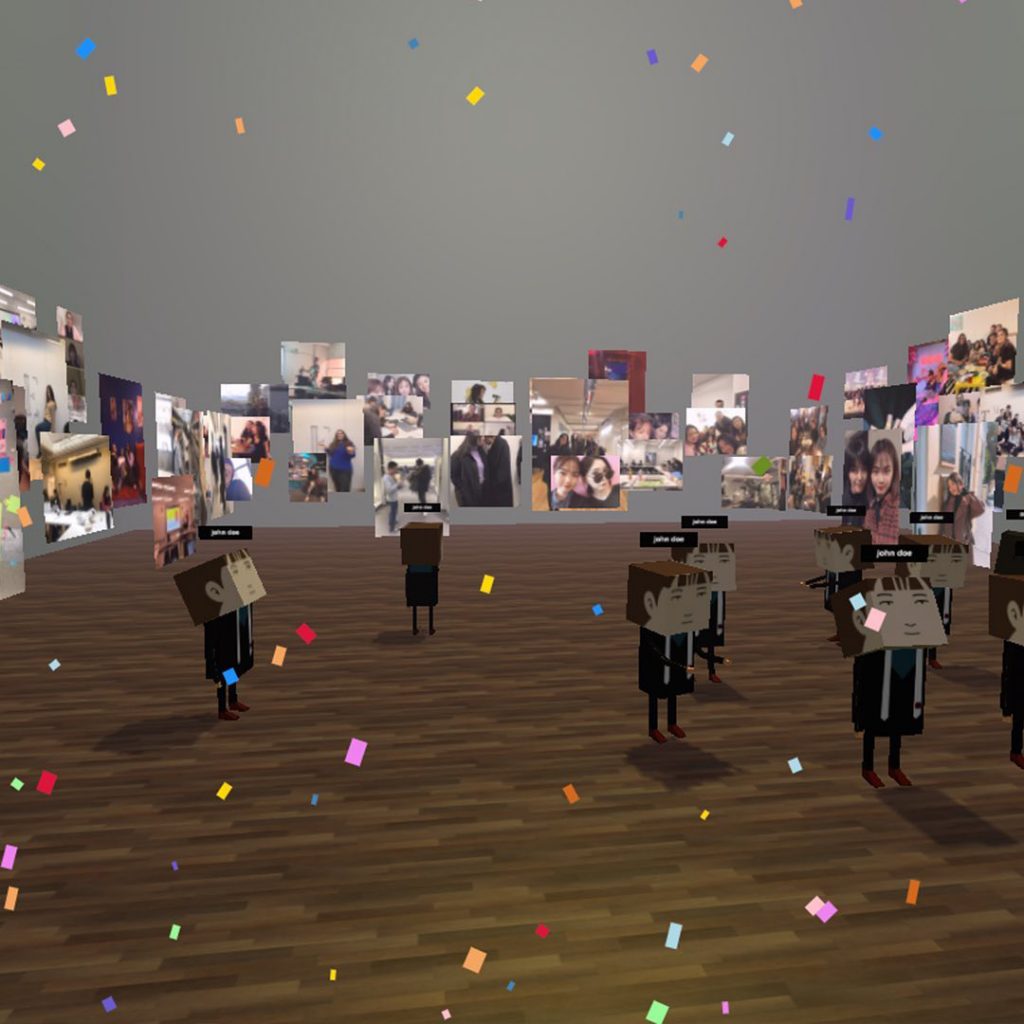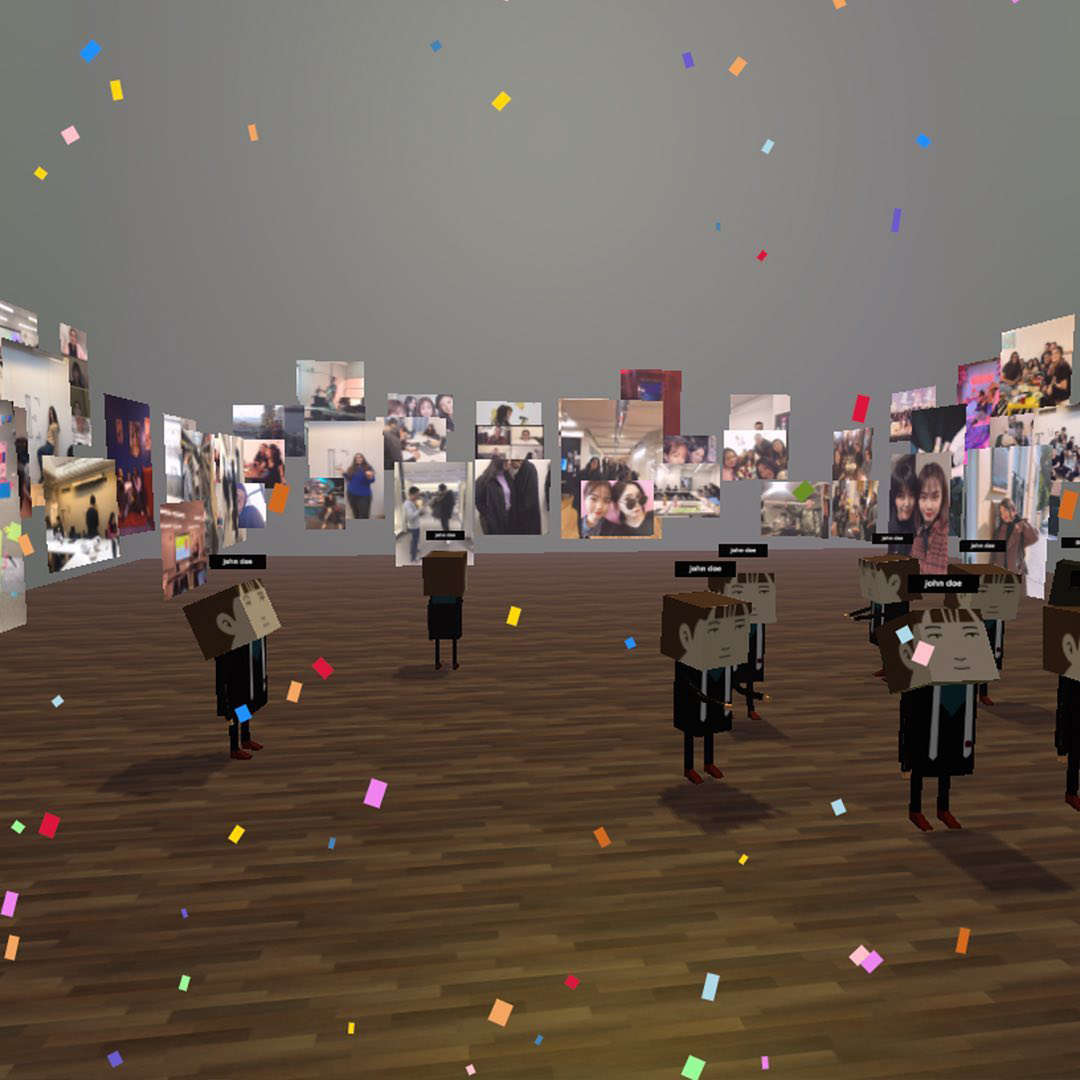
COVID-19 disrupted Commencement exercises around the world this year. But MPS Communication Design (MPS CD) program graduates navigated an online 3D ceremony, surrounded by images of their work and featuring a virtual stage for them to address participants. The reimagined graduation represented an inventive response to the MPS community’s need to gather, connect, and reflect as well as program director Brendan Griffiths’ belief that the digital tools his students develop can foster new kinds of experiences including educational ones.
“We thought about how to make graduation unique to the time, so we tried to replicate a feeling instead of a physical environment,” says Griffiths. “The audio was fed in via Zoom, and each student was repped by a unique avatar.”
Friends and family were invited as well and had their own generic avatars. The 3D space was built by Yifu Zhang, who collaborated closely with Griffiths and Zhang’s fellow MPS CD students.
“When COVID-19 hit NYC and we realized we needed to have an online commencement, naturally we thought about how we could improve the experience, as opposed to just having a regular Zoom meeting,” says Zhang. “Our program is focused on the digital experience and using cutting-edge digital products, so online collaboration has never been unfamiliar to us.”
Griffiths echoes Zhang, noting that “The program is very collaborative. I see everyone in the classroom as an equal collaborator; they are my peers.”
The online graduation interface was an extension of a Google Maps–based tool Zhang created to virtually walk around the campus with his friends during the quarantine. Zhang’s solution to the human need to gather laid a solid foundation for his commencement project. “Giving people a way to interact was important, not the environment. So we could think really creatively about what the virtual experience was like.”
The MPS CD program has been utilizing digital platforms to deliver lessons and connect with students long before the coronavirus forced students off campus. Griffiths describes the learning environment as a “cloud-based studio,” because even though the students don’t have physical work spaces, they use Slack, Figma, and other creative and communication tools to interact continually in the virtual studio.
“The pivot to remote wasn’t as rocky or abrupt as other programs because we already had so many systems in place,” explains Griffiths. Throughout the period of remote study, Griffiths’ cohort continued to have access to the digital tools and guidance needed to develop their capstone projects, so students graduated with their expected robust portfolios.
“What’s exciting about this moment is the new level of access to external experts and colleagues who are available to students because they don’t have to travel to participate. They can log in from anywhere to offer feedback.” For their final critiques, students engaged not only with New York City-based practitioners but also creatives from Oregon, Stockholm, Sweden, and beyond. Griffiths notes that the same holds true for students who want to enroll but can’t travel to NYC: The remote learning environment creates unprecedented access.
Looking ahead to the fall, Griffiths sees an opportunity to refine a remote-first curriculum that fulfils all of the objectives of the program’s on-campus version. In fact, he hopes to have even higher touch with students, as faculty members can use Zoom and other tools to check in more often than is possible in person.
“The context has slightly shifted but the mission is the same,” he says. “We are steadfast in pursuing what we set out to do.”

